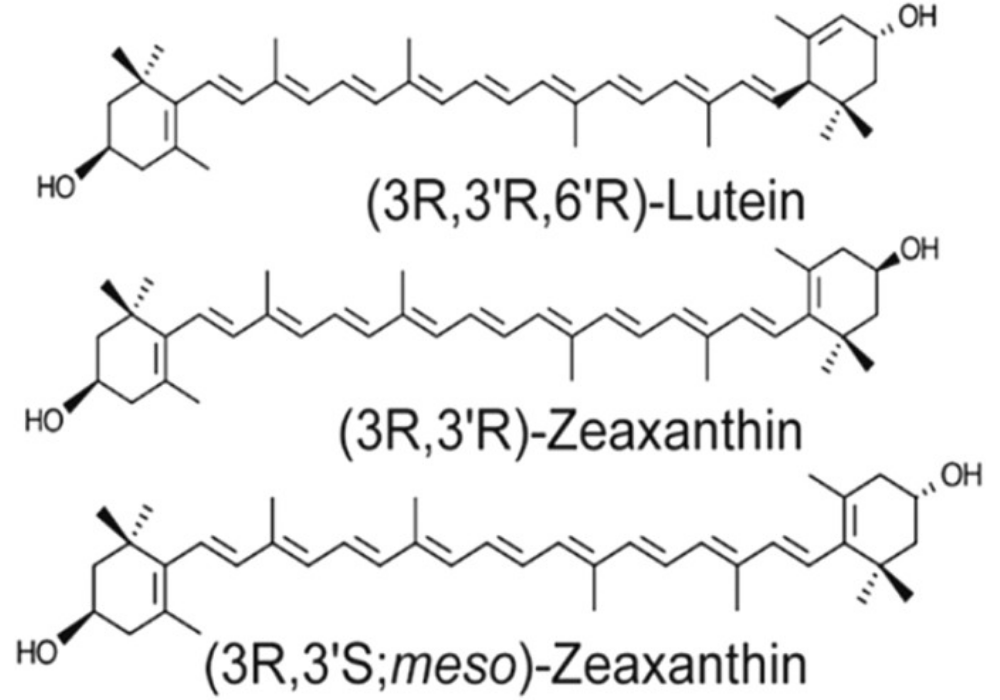Why the Type of Zeaxanthin In Your Eye Vitamins Matters
Posted by EyePromise on Feb 3rd 2022
When it comes to eye vitamins, one of the most important ingredients for eye health is zeaxanthin (zee-uh-zan-thin). This nutrient shows up in vitamin formulations in a few different ways. Here are some of the most common forms of zeaxanthin in vitamins, where they are likely sourced from, and why you should know the difference.
What Is Zeaxanthin?
Zeaxanthin is an antioxidant found in the eyes, brain, and blood. Also called a carotenoid, it’s a pigment that has protective qualities. The eye chooses zeaxanthin to accumulate heavily at the center of the retina to protect the sensitive cells responsible for healthy vision. While we all have a certain amount of this protective pigment to start with, our bodies cannot produce zeaxanthin on their own. We need to ingest this antioxidant through food or supplementation to sustain the levels of zeaxanthin necessary to protect our vision.
Dietary (Natural) Zeaxanthin
As mentioned, zeaxanthin can be ingested through food. It can be found in leafy greens like spinach, kale, and broccoli or brightly colored fruits and vegetables like bell peppers, corn, and paprika peppers. However, you would need to eat 20 ears of corn every day to get the amount of zeaxanthin necessary to build and sustain your internal eye protection. That’s why many healthcare professionals recommend supplementation.
To get the adequate amount of dietary zeaxanthin to protect your vision, you should take an eye vitamin with at least 8 mg of the antioxidant. While many supplements have a 5 to 1 ratio of lutein to zeaxanthin, the center of the retina selects zeaxanthin in a higher amount than lutein at a 2 to 1 ratio. A vitamin that meets this or a 1:1 ratio is going to be best for enhancing and supporting healthy vision.
Zeaxanthin Isomers

“Isomer” is the chemistry term for “each of two or more compounds with the same formula but a different arrangement of atoms in the molecule and different properties.” The chemical makeup of zeaxanthin is shared by other isomers, but that doesn’t make them equal. The body will look for the type of zeaxanthin found in foods because that’s what it’s used to.
However, sourcing dietary zeaxanthin for vitamins can be costly, so some companies choose to incorporate other synthetic versions of zeaxanthin isomers. So, when you’re looking for an eye vitamin, read the label. If it lists “Zeaxanthin,” this is the dietary ingredient. If it lists “zeaxanthin isomers,” it contains the other, synthetic versions of the critical antioxidant.
Meso-Zeaxanthin

Meso-zeaxanthin is a unique zeaxanthin isomer in the fact that it’s also found in the eye naturally. However, your eye only produces it when it’s lacking zeaxanthin, and to develop it for supplements, a harsh chemical process is applied to lutein in a laboratory. While some will argue that meso-zeaxanthin is dietary because it’s found in food sources, fish skin and turtle fat are hardly common ingredients in the average American diet.
Astaxanthin
While not technically a type of zeaxanthin, astaxanthin is a naturally occurring carotenoid found in certain algae and causes the pink-red color in salmon that some people use as a substitute. Like zeaxanthin, astaxanthin has antioxidant properties and may be effective for supporting immune, joint, and skin health. However, there is not enough clinically validated evidence to support supplementing with astaxanthin for any of these areas of health, much less eye health.
When it comes to protecting and supporting healthy eyes, it’s best to go with what the body knows. Find out how you can get an eye vitamin with the amount of natural zeaxanthin your eyes need today!

